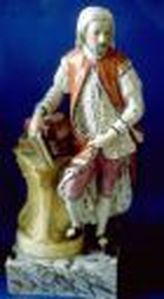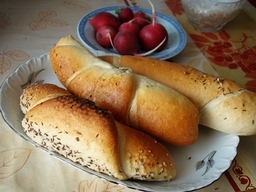 Chaucer--the man knew birds I'll leave it to other writers to focus on the fascinating, but much contested, history of Valentine's Day. They can sort out how the medieval Church may have appropriated the ancient Roman festival of Lupercalia (already being held in mid February); decide whether Valentine, a third century Bishop, had indeed been beheaded for holding secret marriages; and debate whether as a saint, he truly restored a blind woman's sight. (And for goodness sake, will we ever agree whether Valentine really signed his final letter with these immortal words: 'From your Valentine?') These questions are important--after all, an entire industry depends on these re-purposed, glossed-over events to thrive. But, for me, the history of Valentine's Day would be nothing without the birds and, of course, the buns.  some really smart birds First, the birds. I've seen repeated many times this story that medieval people believed that birds mated on February 14. It doesn't help that Chaucer seemed to confirm this belief in his fourteenth century Parliament of Fowls, "For this was on St. Valentine's Day, When every fowl cometh there to choose his mate." (Birds, apparently, were smarter than people. Despite all the calendar changes--from Julian to Gregorian--that confused ordinary people, birds could figure out when February 14 was).  caraway buns--the makers of romance? So, of course, with birds, must come buns... Logically, then, if you believed that birds mated on Valentine's Day, then it's only rational to eat as birds do. Thus, many people ate buns with caraway seeds on February 14 too, hoping to entice a mate. (Am I the only one imagining people sitting around with their pints of ale, taking turns pecking at buns on their own and other people's plates...?) So this year, why not forgo the chocolates, and bring on the seeds?! And here is a traditional caraway seed bun recipe, in case, like me, you've never made such a thing in your life. So long as you don't say "Romance is for the birds!" (Sorry, couldn't resist!) I'm curious, though, does anyone still eat these buns on Valentine's Day? And other than chocolate and candy, does anyone have any traditional Valentine's day food?
11 Comments
Mr. Cornelius
2/12/2012 11:19:17 pm
No interesting culinary traditions, but a weird coincidence is that my mom and her mom were both born on Valentines day and theyre both bird brains
Reply
Matt
2/13/2012 11:40:59 am
That's hilarious! :-)
Reply
Matt
2/13/2012 11:45:06 am
I'm thinking of starting a new tradition with caraway buns!
Reply
Susan
2/14/2012 12:04:25 am
Forget the buns!
Reply
bekerys
2/14/2012 05:42:51 am
A favorite new tradition of mine is to buy, not make, a Tastykake Chocolate Lover's pie. Yummy!!! Available only to the end of February, an regions served by the Tasty Baking Company of Philadelphia. Oh, and it should be accompanied by a cup of strong coffee or a glass of very cold milk!
Reply
bekerys
2/16/2012 12:22:39 am
You may just get your wish.... Leave a Reply. |
Susanna CalkinsHistorian. Mystery writer. Researcher. Teacher. Occasional blogger. Categories
All
Archives
May 2023
|
 RSS Feed
RSS Feed